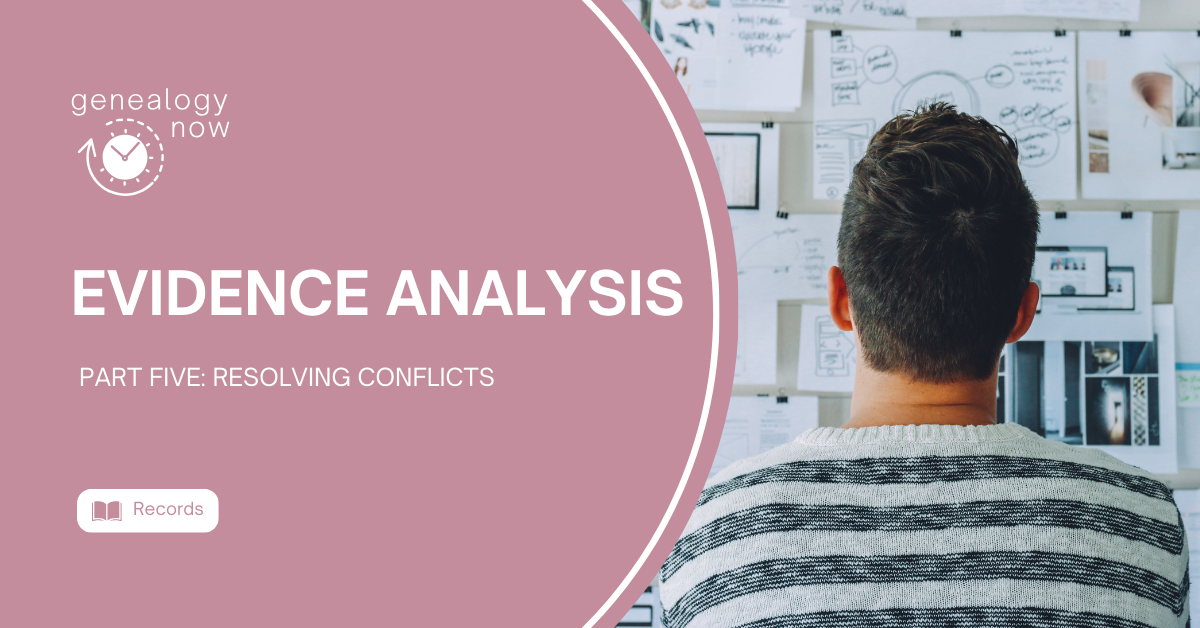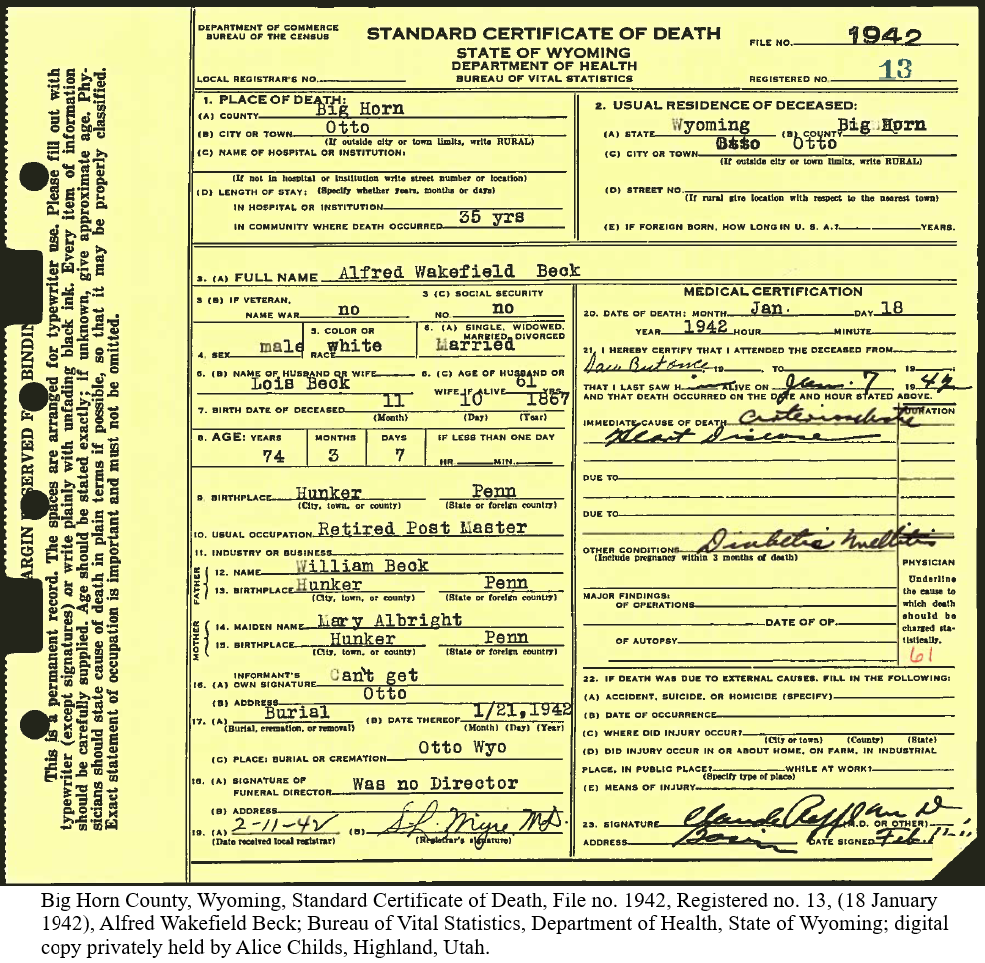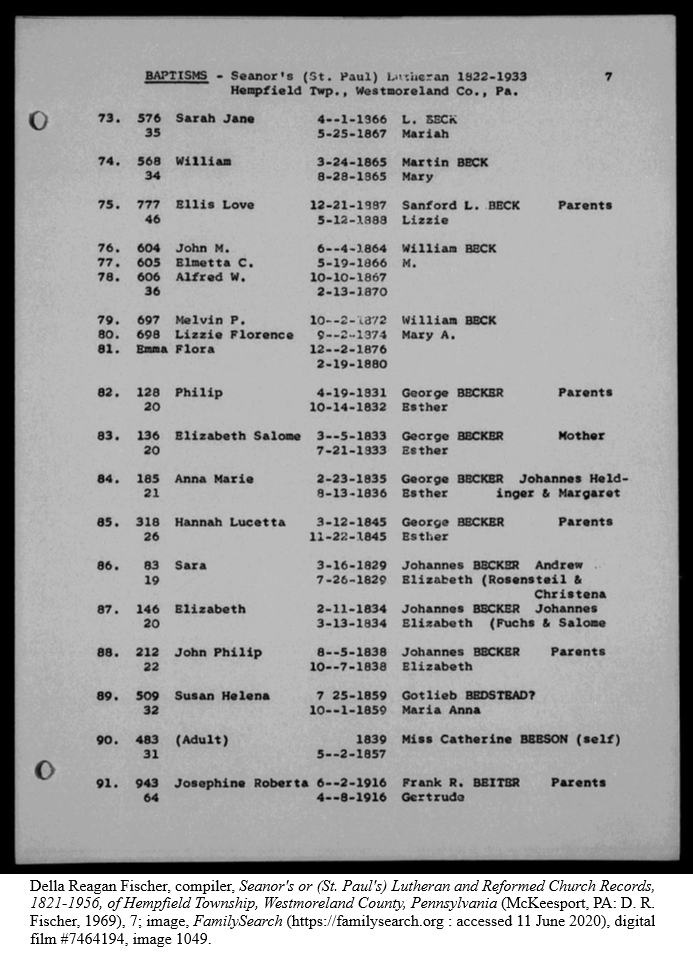
Welcome to the fifth installment in a six-part series about evidence analysis, or the process by which we determine the reliability of the evidence we discover in our research. Part One discussed the value of evidence analysis and presented three important questions to ask ourselves as we examine historical records about our ancestors:
- When and how was the source created?
- Who provided the information for the source?
- Do the facts in the source directly or indirectly answer the research question?
Part Two addressed the first question, “When and how was the source created?” Part Three helped us answer the second question, “Who provided the information for the source?” In Part Four, we looked at the third question, “Do the facts in the source directly or indirectly answer the research question?”
Today we will take a look at how evidence analysis can help us make decisions when we encounter conflicting information about our ancestors’ life events.
The Research Question
Evidence analysis is always based on a research question. For this example, our question will be, “When was Alfred Wakefield Beck born?” If you recall the records I have been using as examples throughout this series, I have two records that provide different birth dates for Alfred. The first is his death certificate, which states he was born on 10 November 1867.

The second record is a baptism record. This record provides a birth date of 10 October 1867.

Before we can decide which birth date is most likely to be correct, we need to walk through what we have learned about analyzing records.
Question 1: How and When Were the Records Created?
The death certificate is considered an original source, created at the time Alfred passed away. However, this record was created many years after Alfred’s birth. It was not the first recording of that event.
The baptism record was trancribed and translated from the original church record, which was written in German. The location of the original record is unknown, but the original would have been created at the time of Alfred’s baptism when he was a little over two years old. The transcription itself was published in 1969, about one hundred years after the event occurred.
Question 2: Who Provided the Information about Alfred’s Birth?
It is unclear who provided the information about Alfred’s birth on the death certificate. There is a space for “Informant’s Own Signature” but the answer states, “Can’t Get, Otto Wyoming.” The record states that the death occurred in Otto, Wyoming. Otto is a tiny town with a population of just fifty individuals and no hospital. Alfred likely died at home. Because his wife was still living, it is likely that she was the one who provided the information for the death certificate, although we can’t be certain.
The baptism record states that the parents were the witnesses. They almost certainly provided the information about each of their children’s births to the officiant, and since they were eyewitnesses to that event, they are considered reliable informants.
Question 3: Does the Record Provide a Direct Answer to the Research Question?
Both records provide a direct answer to the question, “When was Alfred born?” However, the two answers are not the same.
Correlating the Evidence
After assessing each record, there are some positive and negative elements to each one. What we know about the informant for each record favors the baptism record. The parents provided the information about Alfred’s birth for the baptism record and they were eyewitnesses to the event. The informant for the death certificate was either Alfred’s wife (who was not an eyewitness to his birth) or some other unknown person.
The creation method for each record favors the evidence on the death certificate. The baptism record was translated and transcribed from the original record, so there is a good chance that Alfred’s birth date was transcribed incorrectly.
Before making a decision, we will need to find additional records to help with our analysis.
Finding Additional Original Records
Two additional original records state that Alfred was born in November 1867. The first is the 1900 U.S. census. Alfred was working as a coal miner in Scofield, Utah, and he was likely the person who provided his birth information to the enumerator when that census was taken.

The other record is Alfred’s father’s Civil War Pension Application, which states that Alfred was born on 10 November 1867.

With two additional original records on which Alfred’s birthdate was provided by himself and his father that both agree with the November birthdate, we can conclude that Alfred’s birth date was most likely November 10, 1867. The date provided on the transcribed baptism record was probably an error. The only way to know what the original record said would be to find that original, which has proved elusive thus far in my research.
Summary
When details in records conflict, it is important to analyze the source, information, and evidence provided on multiple records to draw valid conclusions. While each record directly answered the question, “When was Alfred born?” one record provided a different date than the rest. Original records all agree on Alfred’s birth date of 10 November 1867. Only one, a transcribed record, states he was born on 10 October 1867. Agreement among multiple original records with information provided by eyewitnesses, the research subject, and likely his wife provide stronger evidence than a single transcribed record that is subject to error.
